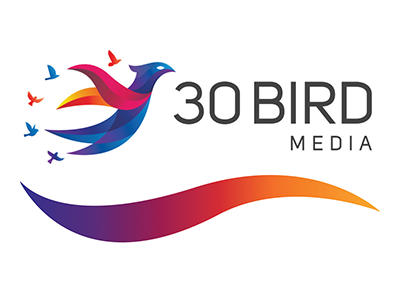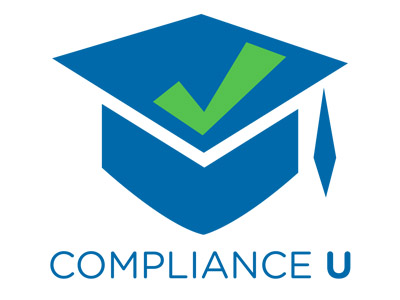 |
Evaluación e implementación de un entorno de cuidado infantil seguro (CDA 1 & 5) (Spanish) Assessing and Implementing a Safe Child Care Environment (CDA 1 & 5) |
2.00 |
Cuando las familias inscriben a su hijo en un programa de cuidado infantil, confían en que los profesionales que trabajan con su hijo lo mantendrán seguro. A medida que los bebés y niños pequeños curiosos se desarrollan, su deseo de explorar presenta desafíos de seguridad únicos. Este curso guía a los profesionales que trabajan con bebés y niños pequeños para evaluar los espacios de juego, las experiencias de los niños y las prácticas actuales para maximizar la seguridad de los niños.
When families enroll their child in a child care program, they trust that the professionals working with their child will keep him safe. As curious infants and toddlers develop, their desire to explore presents unique safety challenges. This course guides professionals who work with infants and toddlers to assess play spaces, children’s experiences, and current practices to maximize children’s safety. |
 |
Quality Management: Causes Of Problems (Instructor Guide) |
0.67 |
In this course you will learn to: create and interpret a cause-and-effect diagram, create and analyze a Pareto chart, create and interpret a scatter diagram, and create an interrelationship diagram and use it to identify root causes.
This Instructor's Edition of this course includes notes and suggestions to assist you in presenting the material, whether in an in-person classroom setting or as an instructor-led online or distance-learning course. It also provides you with the answers to questions found in mid-lesson activities, as well as in the quiz that concludes the course. |
 |
E-Mail Etiquette: E-Mail Messages |
0.50 |
In this course, you will learn how to take advantage of the headers in e-mail messages. You will learn about the “To” field, in which you should type the recipient’s e-mail address. You will also learn when to send carbon copies and blind carbon copies of messages. You will learn the importance of writing a proper subject field for e-mail messages and that the header also includes the date and time of sending messages. Finally, you will learn how to construct the body of an e-mail message, add a personal touch to your messages by including a proper greeting, relay information by placing it in the appropriate order, and use different types of lists effectively. You learned the correct way to write long e-mail messages to keep recipients interested in the information and how to effectively close e-mail messages. |
 |
Organizational Communication: Leadership and Motivation (Instructor Guide) |
1.00 |
Organizational communication relies on the communication skills of employees, managers, and leaders. The competence of leaders is reflected in their communication skills. Communication skills also play a major role in differentiating a manager and a leader. To become an effective leader, you need to understand the theories of leadership. The structure of an organization also determines the ability of a manager.
Although motivation resides within an individual, organizations can affect motivation through communication. To motivate employees, management must clearly outline its expectations, goals, and rewards. Organizational structure can affect the communication used to motivate employees, as well as other types of communication within the organization.
In this course you will learn to: describe how communication skills and leadership are related, and define the theories of motivation, and identify motivational tools and the impact of nonverbal behavior.
This Instructor's Edition of this course includes notes and suggestions to assist you in presenting the material, whether in an in-person classroom setting, or as an instructor-led online or distance-learning course. It also provides you with the answers to questions found in mid-lesson activities, as well as in the quiz that concludes the course. |
 |
Microsoft Project 2021/365 Complete |
16.00 |
30 Bird Media's Microsoft Project 2021/365 Complete courseware covers the concepts and skills needed for maximum productivity in Project, starting with fundamentals and working up to advanced tools and techniques.
There are no specific prerequisites for this course. However, general computer user knowledge is assumed. Any additional experience having worked with forms and/or databases will be helpful.
You will benefit most from this course if you have at least some prior knowledge of project management procedures and practices. It is intended to support you in applying this knowledge through the use of Microsoft Project as a project management tool. |
 |
Preventing Sexual Harassment and Understanding California Law |
0.50 |
This course will teach California employees how to recognize sexual harassment, defines the rights and responsibilities of employers and employees, and provides an overview of the legal remedies available in sexual harassment lawsuits. |
 |
Exploring Four Areas of Development of Children K-6 for Paraprofessionals |
1.00 |
One of the most helpful ways to gain an understanding of the needs and interests of students ages 5-12 is to examine their development from four different perspectives: physical, cognitive, social, and emotional. It is important for paraprofessionals to keep all four of these areas in mind when helping educators implement classroom activities and experiences. Keeping the four areas of development in mind helps staff to better understand the development of the whole child. |
 |
Introduction to Eldercare |
2.75 |
This course will equip you with the essential knowledge to navigate the unique challenges and opportunities that come with caring for older adults. |
 |
Building Upward: Resuscitation of Anaphylactic Shock Part 1—Overview |
1.00 |
Retired ALS provider, Michelle Cerone, speaks with Dr. Jeremy Cushman about the recognition and treatment of anaphylactic shock. This discussion gives the BLS provider the opportunity to compare allergic reactions to the life-threatening condition that requires rapid intervention. Final Exam: Please read each question carefully. You will have two attempts to gain a 70% or higher on this exam. If you are not successful in two attempts, you are welcome to take the course again to gain the certification. |
 |
Exploring Four Areas of School-Age Development: Physical Development |
0.50 |
One of the most helpful ways to gain an understanding of the needs and interests of youth between 5 and 12 is to examine their development from four different perspectives: 1) Physical Development, 2) Cognitive Development, 3) Social Development, and 4) Emotional Development. In this course, we will explore the physical development perspective. |











